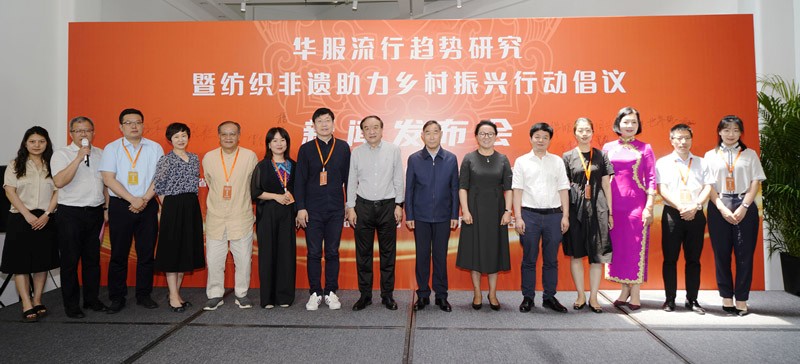Research on Chinese traditional fashion launched in Beijing
A research project on the fashion trends of Chinese traditional clothing was launched in Beijing on Friday. The effort is part of an industry initiative to leverage the intangible cultural heritage to promote China's rural vitalization.
A research project on the fashion trends of Chinese traditional clothing was launched in Beijing on Friday. The effort is part of an industry initiative to leverage the intangible cultural heritage to promote China's rural vitalization.

The project has come about in part from a recent trend among young people dressed in Chinese traditional clothing, called "Huafu" or "Hanfu." Led by Jia Xizeng, an associate professor at the Academy of Arts & Design of Tsinghua University, the project brought in fashion experts from Beijing Institute of Fashion Technology and China Fashion Association, as well as trend setters from Italy and Japan.
The research project will study the color, style, pattern, and fabric of Chinese traditional costume, look into its evolution, and analyze and predict its trend. It is the first time that a comprehensive and systematic study is conducted on such a subject.
Industrial insiders believe that the project will be of great significance to advance the study of ancient Chinese clothing culture, promote the integration among enterprises, universities and research institutes in the field, and enhance the influence of Huafu on the global fashion arena.

Zhou Jin, director of Shandong Fashion Association, said in her speech at the launch that promoting Huafu is a responsibility that the industry should take on, and it is also a suitable carrier to spread Chinese culture and help to build the image of China.
"Vogue is the best international language," she said. "We should apply Huafu as a vehicle to help deliver a lovely image of China."
As for how to leverage intangible heritage to promote the development of China's rural areas, Zhou said talent is the driving force behind rural vitalization, and the development of intangible cultural heritage of ethnic minorities should rely on domestic high-caliber designers.
In addition to a platform the initiative has developed in Guizhou province, she said a textile cooperative has been set up in a Naxi ethnic village in Lijiang, Yunnan province, blending culture and art.
"We will tap into the local labor pool, build prosperity on local industries, and help intangible cultural heritage in the textile industry of Guizhou and Yunnan go global," she said.
"The research doesn't only belong to China, but also to the whole world," Zhou said.
In her speech, Zhou gave thanks to the Department of Industry and Information Technology of Shandong Province, POLI.design of Design of the Politecnico di Milano, the Nishan World Center for Confucian Studies, Japanese stylist Nagumo Haruyoshi and his team, former President of Beijing Institute of Fashion Technology Liu Yuanfeng, and Honorary President of the Italian Fashion Chamber Mario Boselli for their contribution to the research efforts.

